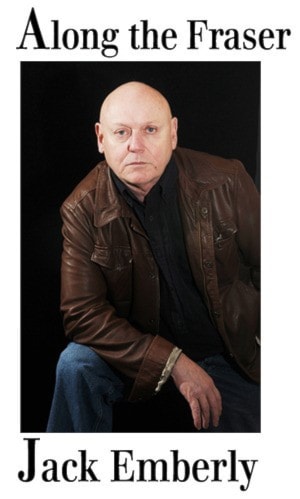A man gave his sons a bundle of sticks, saying, “Break it.”
Each failed.
Later, the old man untied the bundle. Each youth took a single stick and broke it easily.
– Aesop’s fables
Strength in unity was illustrated here twice last month, along with other reasons for connecting with neighbors.
Firstly, when home owners in a quiet residential area around 124th Avenue and 236 Street discovered, by chance, a gravel pit proposal (15 wooded acres) for their neighborhood, they were shocked. Lives wouldn’t be the same. An open mine in a suburb?
Kathy Wagner, a resident told herself, “Council is supposed to serve the needs of the people it represents.” A gravel pit “defies common sense.”
But, common sense doesn’t always make the rules. Wagner’s neighborhood is zoned agricultural, yet gravel pits could be sanctioned by the Agricultural Land Commission and it – not the district – received the proponent’s application. Nobody knew what the ALC would do.
“We had to oppose this as strongly as possible,” Wagner told The News in September. Neighbors began to share concerns – constant noise, lifestyle disruption, loss of property values, damage to a fish stream (Coho Creek), serious health issues posed by dust.
“It was like dropping a stone into a pond,” noted Craig Speirs. “The ripples went out with a swoosh. Energy coming out of that event spurred a community to organize, and gain a sense of neighbourhood.”
A community determined to “make the bad plan go away,” as Speirs puts it, are a powerful force. Neighbors organized an informational gathering that attracted 150 sympathetic supporters. “It was the first time three-quarters of those folks ever stood on a corner as an activist,” observed Speirs.
More ripples. Residents circulated fliers and wrote letters to council, condemning the gravel proposal and urging it be killed.
Wagner created a Facebook page, which drew 2,800 views. A picture reminiscent of the Lorax at work emerged – of uprooted trees, wildlife threatened, excavators gouging up rock and crushing it, dump trucks rumbling down quiet streets accustomed to cyclists, dog walkers, and kids at play.
“No”, said an awakened neighborhood, now an effective and stubborn bundle of sticks.
Fortuitously, the ALC ordered that a “non farm use application” be filed, one that had to pass district council.
On Oct. 1, opponents flooded council chambers, armed with overwhelming logic against the gravel pit. District staff recommended against it. Would council kill the proposal by not sending it back to the ALC? The answer wasn’t to be learned until it met again, Oct. 9. But before that, the proponent withdrew the application.
So, has the bad plan gone away?
No, says Speirs. “The proponent can re-apply at any time, and current rules still allow gravel proposals in suburbs to leapfrog directly to the ALC.”
Speirs thinks the rules should change. “If council had approved the proposal,” he speculates, “and the ALC okayed it, the district would have had to amend the Soil Removal Bylaw to show a designated gravel use, issue a permit, and amend the Official Community Plan. A whole series of public hearings and notifications would have ensued.”
What should happen instead? “Changes should fit the needs and lifestyle of our citizens,” says Speirs. “Any re-designation, even temporary of agricultural land within a municipality should proceed, firstly, to community offices for their approval. I’d prefer a process identifying our gravel reserves and then that’s it – no others need apply. That would have saved all this hassle.”
Until that happens – if it does – Wagner’s neighbours will keep an eye peeled for bad ideas for their community. They’re talking about forming a neighborhood association. Nine such groups listed on the district’s website regularly communicate with municipal staff about issues, concerns, and plans that might affect them. It’s a collaborative process the district has promoted since bringing Jim Dyers, a community builder from Seattle, here to present workshops on empowering and enhancing neighborhoods.
Second bundle of sticks: in September, council linked with river stewardship groups to produce a strong counter respond to another bad plan – changes to the Fisheries Act.
The District’s ad hoc fisheries task force was made up of ARMS, KEEPS, environmental consultant Mark Adams, Couns. Cheryl Ashlie and Al Hogarth, and key district staff. Its final report identified negative environmental, social and economic impacts changes to the act will have on Maple Ridge.
That document – approved by all of council except Mike Morden, who fears the feds will shut us out of future discussion – calls on Ottawa to abandon its position of protecting specific fisheries instead of their habitat, retain an adequate number of fisheries officers to enforce law, provide DFO support for restorative and educational programs, and undertake meaningful dialogue with the public.
When you’re shut out of talks about things that affect you, there’s always another way to make your point.
The district has urged other towns to join them in these expectations.
Hopefully, we’ll see a bundle of sticks that Ottawa can’t break.
Jack Emberly is a retired teacher, local author and environmentalist.
